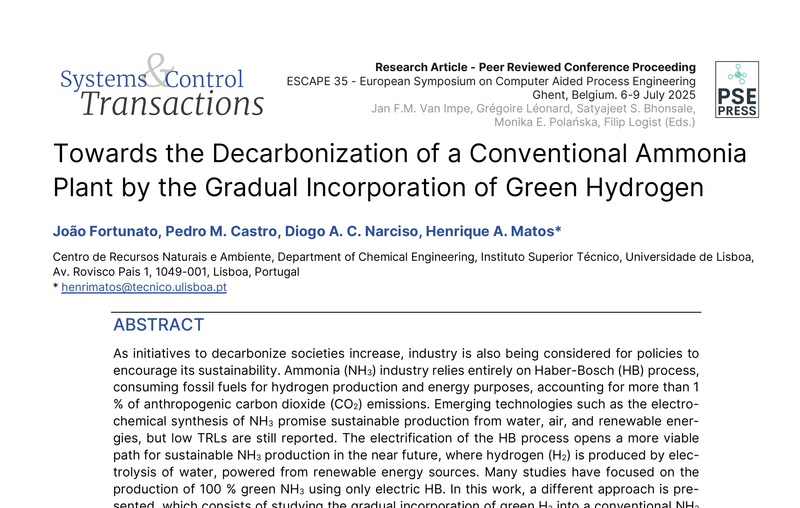Towards the Decarbonization of a Conventional Ammonia Plant by the Gradual Incorporation of Green Hydrogen

Abstract
As initiatives to decarbonize societies increase, industry is also being considered for policies to encourage its sustainability. Ammonia (NH3) industry relies entirely on Haber-Bosch (HB) process, consuming fossil fuels for hydrogen production and energy purposes, accounting for more than 1 % of anthropogenic carbon dioxide (CO2) emissions. Emerging technologies such as the electro chemical synthesis of NH3 promise sustainable production from water, air, and renewable ener gies, but low TRLs are still reported. The electrification of the HB process opens a more viable path for sustainable NH3 production in the near future, where hydrogen (H2) is produced by elec trolysis of water, powered from renewable energy sources. Many studies have focused on the production of 100 % green NH3 using only electric HB. In this work, a different approach is pre sented, which consists of studying the gradual incorporation of green H2 into a conventional NH3 plant. An Aspen Plus® V14 model of the methane-fed HB process was developed, and the limita tions of the process were identified by sequentially incorporating 0 to 10 % green H2. To avoid overheating the equipment in the natural gas reforming stage, a new configuration is suggested for this step. With this modification, the study is extended to incorporating higher percentages of green H2, up to a limit of around 61 %. Finally, the impact of the reforming temperature tolerance on the green H2 incorporation limits for the suggested configuration was studied.
Keywords: Ammonia, Haber-Bosch Process, Green Hydrogen